UGC greatly influences 79% of customers’s buying decisions.
User-generated content (UGC) is a fantastic approach to increasing your brand’s visibility and highlighting contributions from your customers. UGC goes beyond customer reviews; creative marketing teams are discovering how to effectively use user content to enhance brand awareness, improve online reputation, generate sales leads, and drive sales.
In this guide, we’ll explore UGC reviews and their advantages, followed by a discussion on how to develop an engaging marketing strategy that integrates user content.
What is UGC?
UGC stands for User-Generated Content refers to unique, brand-related content produced by social media users and shared on various social media platforms or other channels.
UGC includes any form of content created and shared by product or service users, rather than by the brand itself. This content includes reviews, testimonials, photos, videos, blog posts, social media updates, and more. UGC is typically created voluntarily by customers who want to share their experiences with a brand or product.
Here’s an example of UGC created by customers and then reshared on Feeling the Street’s Facebook:
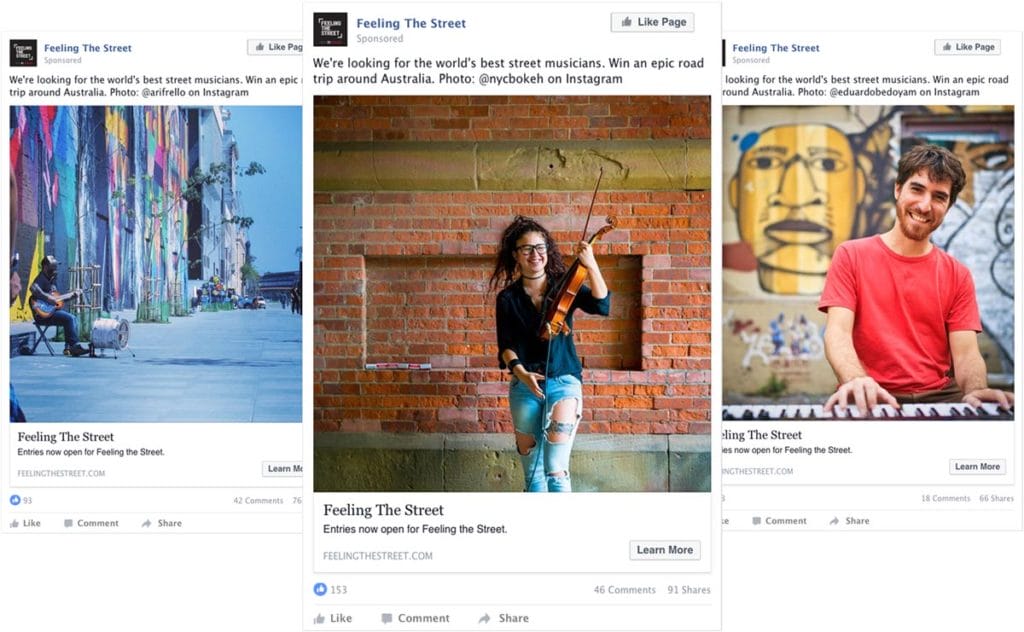
Types Of UGC Reviews?
User-generated content reviews can be broadly categorized into two types: Organic UGC and Paid UGC. Both types play a crucial role in enhancing brand visibility and engagement, but they differ in terms of how they are generated and utilized.
Organic UGC
Organic UGC reviews refer to content that is created and shared by users without any direct incentive from the brand. This type of content is often spontaneous and reflects genuine customer experiences and opinions.
- Customer Reviews: Written feedback on product pages or third-party review sites.
- Social Media Posts: Photos, videos, and stories shared by users on platforms like Instagram, Facebook, and Twitter, often tagging the brand or using brand-specific hashtags.
- Blog Posts: Articles or blog entries written by customers discussing their experiences with a product or service.
- Unboxing Videos: Product review videos where customers unbox and review products, typically shared on YouTube or Instagram.
- Testimonials: Written or video testimonials shared by customers on their channels or submitted to the brand.
Paid UGC
Paid review UGC is content created by users who receive some form of compensation or incentive from the brand. This can include monetary payment, free products, discounts, or other rewards. Brands often collaborate with influencers or loyal customers to generate this type of content.
- Sponsored Posts: Social media posts or blog articles created by influencers or brand ambassadors in exchange for payment or free products.
- Contests and Giveaways: Content generated as part of a brand’s contest or giveaway campaign, where participants create and share content to win prizes.
- Affiliate Reviews: Reviews or testimonials from affiliates who earn a commission on sales generated through their referral links.
- Paid Testimonials: Video or written testimonials from customers who have been compensated for their honest feedback.
>>> Learn More: Incentivized Reviews: Boosting Customer Engagement and Driving Sales
You can use The Trustify Reviews App designed to help businesses harness the power of UGC Reviews by seamlessly integrating customer reviews into their online stores. This feature-rich app not only simplifies the process of collecting reviews but also leverages them to build trust, enhance credibility, and drive sales.
Why UGC Reviews are Essential?
User-generated content (UGC) has become a cornerstone of effective digital marketing strategies. Its importance is backed by compelling data that highlights its impact on brand trust, engagement, and conversion rates.
1. Builds Trust and Authenticity
UGC Reviews is perceived as more authentic and trustworthy because it comes from real users rather than the brand itself. This authenticity helps build brand trust with potential customers, making them more likely to choose your product or service.
2. Increases Engagement
Social media posts with UGC have a 28% higher engagement rate compared to standard brand posts (HubSpot).
UGC Reviews encourages interaction and engagement from your audience. When customers see content created by their peers, they are more likely to engage with it by liking, commenting, and sharing.
3. Boosts Conversion Rates
Websites with UGC see a 29% higher conversion rate than those without it (Adweek).
The presence of UGC, such as reviews and UGC testimonials, can significantly influence purchasing decisions. Potential customers feel more confident in their purchases when they see positive experiences from other users.
4. Enhances Brand Loyalty
UGC Reviews fosters a sense of community and loyalty among customers. When customers contribute content, they feel more connected to the brand, increasing their likelihood of becoming repeat buyers and brand advocates.
5. Cost-Effective Content Creation
UGC reduces the need for brands to create all their marketing content internally. By leveraging content created by users, brands can save on content creation costs while still maintaining a steady stream of fresh and relevant material.
6. Improves SEO and Online Visibility
Sites with UGC see a 20% increase in return visitors and a 50% increase in time spent on the site (Search Engine Land).
Explanation: UGC provides fresh and relevant content that search engines favor. Reviews, comments, and user posts can improve your website’s SEO, leading to higher search rankings and increased organic traffic.
7. Provides Valuable Insights
UGC offers valuable insights into customer preferences and behaviors. By analyzing UGC, brands can better understand their audience and tailor their products, services, and marketing strategies to meet customer needs.
User-generated content is important for modern marketing strategies due to its ability to build trust, increase engagement, boost conversions, enhance brand loyalty, provide cost-effective content, improve SEO, and offer valuable consumer insights. The data clearly shows that leveraging UGC can lead to significant benefits for businesses of all sizes.
6 Excellent Examples of UGC Reviews
User-generated content (UGC) can take various forms, each offering unique benefits to brands. Here are six excellent examples of UGC that effectively engage audiences and enhance brand presence:
1. GoPro (Action Cameras and Accessories)
GoPro, known for its high-quality action cameras, effectively uses UGC Reviews to showcase the adventurous spirit of its customers. The company encourages users to share their stunning action shots and videos captured with GoPro cameras. This content showcases the adventurous spirit of its customers, encouraging users to share stunning action shots and videos captured with GoPro cameras, highlighting product capabilities, and inspiring potential customers.
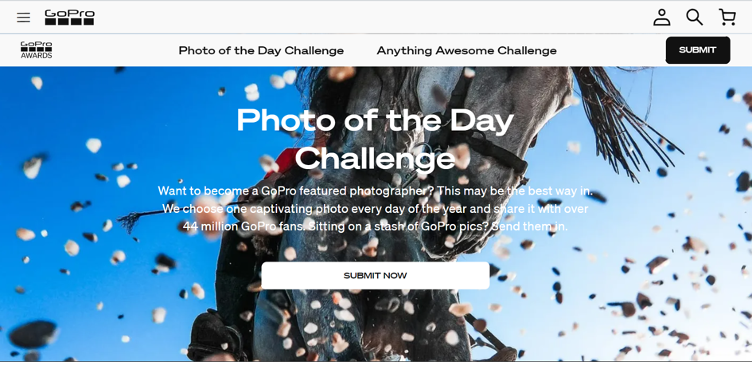
GoPro’s “Photo of the Day” campaign features exceptional user-submitted photos on their social media channels, website, and marketing emails.
2. Starbucks (Coffeehouse Chain)
Starbucks leverages UGC to build a community around its brand. By encouraging customers to share their unique Starbucks experiences and creations, the company creates a personal connection with its audience.
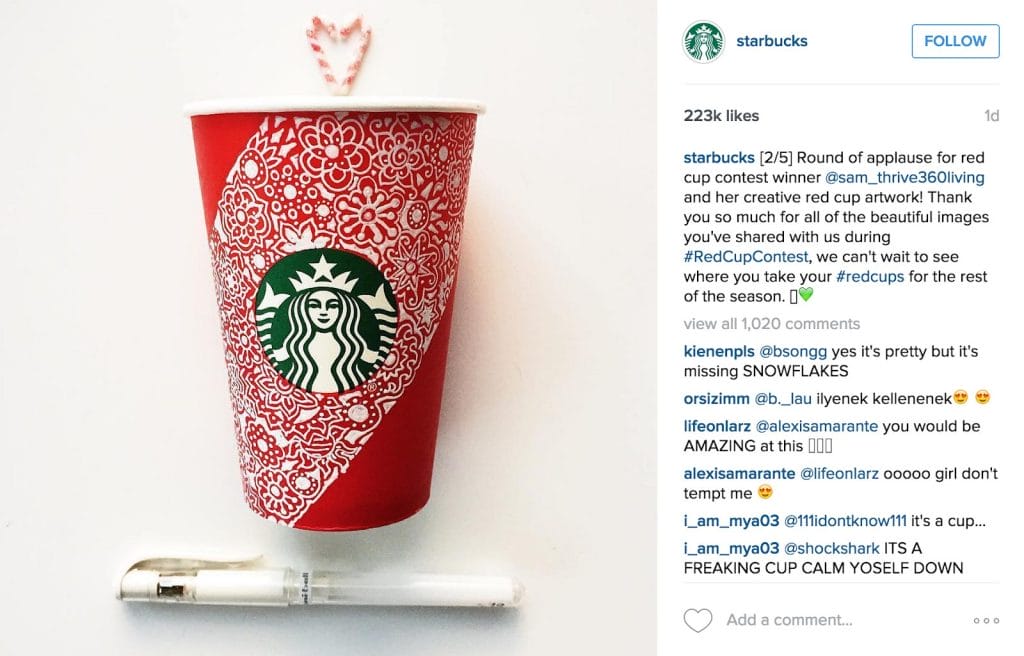
The “#RedCupContest” invites customers to decorate their Starbucks red holiday cups and share photos on social media using the hashtag. This campaign generates thousands of creative entries each year, showcasing customer creativity and enhancing brand visibility.
3. Lululemon (Athletic Apparel)
Lululemon, a popular athletic apparel brand, uses UGC Reviews to promote a healthy and active lifestyle. The company encourages customers to share photos and videos of themselves wearing Lululemon gear while engaging in fitness activities.

The “#TheSweatLife” hashtag campaign invites customers to post their workout photos on Instagram. Lululemon features some of these photos on their official account, celebrating their community’s commitment to fitness and fostering a sense of belonging.
4. Airbnb (Online Marketplace for Lodging)
Airbnb relies heavily on UGC to provide potential travelers with authentic insights into the properties listed on their platform. By showcasing user reviews, photos, and experiences, Airbnb builds trust and credibility.
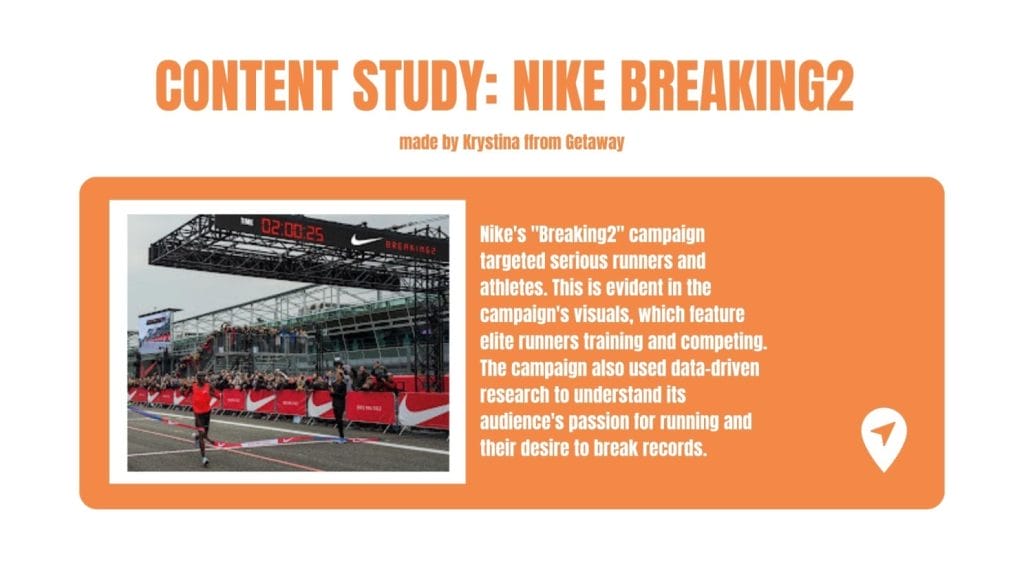
Airbnb uses UGC to build trust by showcasing user reviews, photos, and experiences, providing authentic insights into properties and traveler experiences through campaigns like “Stories from the Airbnb Community”.
5. Coca-Cola (Beverage Company)
Coca-Cola’s “Share a Coke” campaign is a classic example of a successful UGC. The campaign involved printing popular names on Coca-Cola bottles and encouraging customers to share photos of themselves with their personalized bottles.
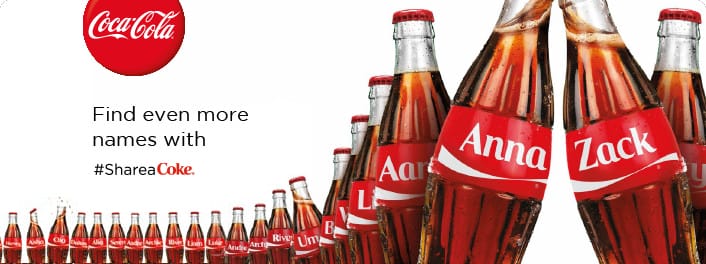
The hashtag “#ShareaCoke” generated millions of social media posts from customers worldwide. This UGC campaign increased brand engagement and personalized the product, making it more relatable to consumers.
6. Glossier (Skincare and Beauty Products)
Glossier, a direct-to-consumer beauty brand, has built its marketing strategy around UGC Reviews. The company encourages customers to share makeup and skincare routines using Glossier products, fostering community and authenticity by reposting user photos on its official account.
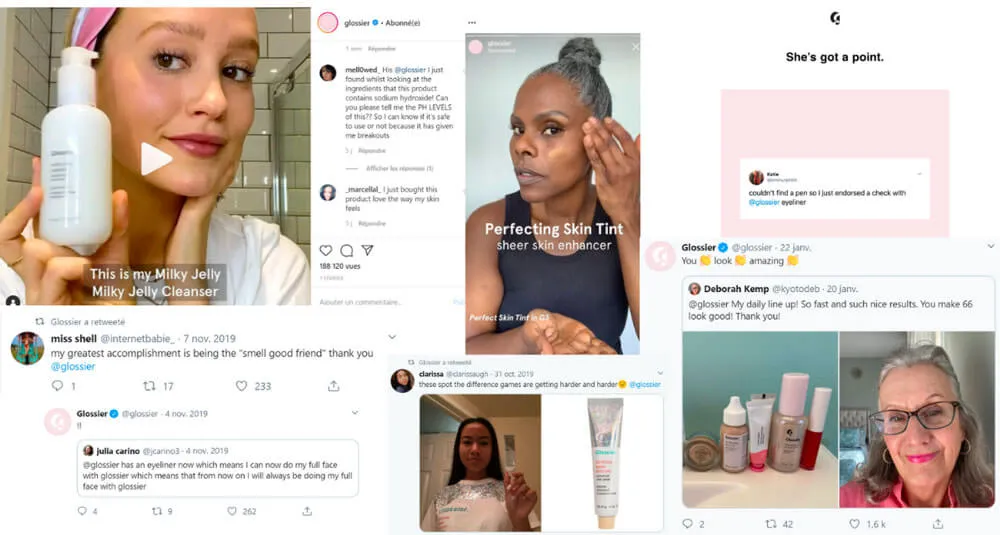
The “#GlossierIRL” (In Real Life) hashtag allows customers to showcase their favorite Glossier products on Instagram. Glossier frequently reposts these photos on their official account, creating a sense of community and authenticity around the brand.
These examples demonstrate how companies across various industries use UGC to enhance their marketing strategies. By encouraging and showcasing user-generated content, these brands build trust, foster community engagement, and create authentic connections with their audiences.
How to Create Good UGC Reviews?
Creating a good UGC Review involves encouraging and facilitating customers to share their experiences in a way that benefits both them and your brand.
Here are five professional ideas to help you create an effective UGC:
1. Run Contests or Challenges
- Idea: Launch a themed contest or challenge that encourages customers to create and share content related to your brand or products.
- Perform: For example, ask users to share photos or videos of themselves using your product in creative ways, tagging your brand, and using a specific hashtag. Offer prizes or recognition for the best entries.
- Benefits: Contests and challenges incentivize UGC creation, generate excitement, and increase brand visibility through shared content.
2. Highlight Customer Stories and UGC Testimonials
- Idea: Feature customer stories and testimonials prominently on your website, social media channels, or in marketing campaigns.
- Perform: Invite satisfied customers to share their experiences with your product or service. Conduct interviews, create case studies, or collect video testimonials that showcase real-life success stories.
- Benefits: Authentic customer stories build trust, demonstrate product benefits, and provide social proof that influences potential buyers.
3. Encourage Reviews and Feedback:
- Idea: Actively encourage customers to leave reviews and feedback about their purchases.
- Perform: Send follow-up emails or notifications requesting reviews shortly after customers receive their products. Provide clear instructions on how to leave reviews and make the process simple and accessible.
- Benefits: Reviews and feedback provide valuable insights for potential customers, improve SEO with fresh content, and build credibility for your brand.
4. Create a Branded Hashtag Campaign:
- Idea: Develop a branded hashtag campaign that encourages customers to share content related to your brand.
- Perform: Choose a unique and memorable hashtag that aligns with your brand values or a specific campaign theme. Promote the hashtag across your social media channels and encourage users to share their experiences using the hashtag.
- Benefits: A branded hashtag campaign increases brand visibility, organically grows your social media presence, and aggregates UGC in one searchable stream.
5. Showcase User Content on Your Platforms:
- Idea: Actively feature user-generated content on your website, social media profiles, or marketing materials.
- Perform: Regularly repost or share high-quality UGC that aligns with your brand aesthetic and values. Tag and credit the original creators to acknowledge their contributions.
- Benefits: Showcasing user content builds community, engages your audience, and demonstrates appreciation for customer contributions. It also provides fresh and diverse content for your marketing channels.
WRAP UP
User-generated content (UGC) stands as a cornerstone of modern digital marketing, offering profound benefits to brands across various industries. By empowering customers to share their experiences, opinions, and creativity, UGC Reviews not only builds trust and authenticity but also enhances engagement, boosts conversions, and fosters a sense of community.
Through this article, brands can implement UGC campaigns to strengthen brand loyalty and achieve sustainable growth in a competitive marketplace.